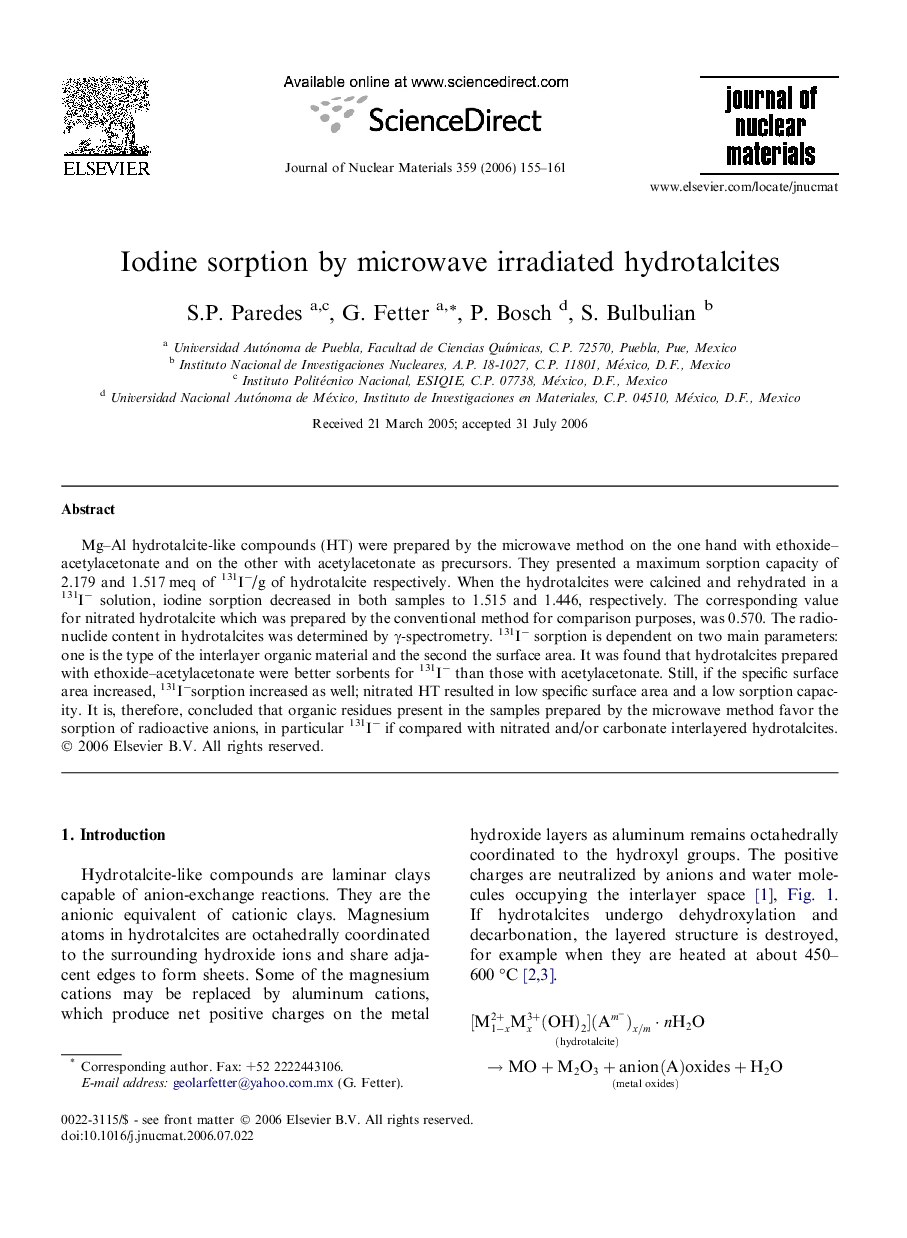| Article ID | Journal | Published Year | Pages | File Type |
|---|---|---|---|---|
| 1569622 | Journal of Nuclear Materials | 2006 | 7 Pages |
Abstract
Mg-Al hydrotalcite-like compounds (HT) were prepared by the microwave method on the one hand with ethoxide-acetylacetonate and on the other with acetylacetonate as precursors. They presented a maximum sorption capacity of 2.179 and 1.517 meq of 131Iâ/g of hydrotalcite respectively. When the hydrotalcites were calcined and rehydrated in a 131Iâ solution, iodine sorption decreased in both samples to 1.515 and 1.446, respectively. The corresponding value for nitrated hydrotalcite which was prepared by the conventional method for comparison purposes, was 0.570. The radionuclide content in hydrotalcites was determined by γ-spectrometry. 131Iâ sorption is dependent on two main parameters: one is the type of the interlayer organic material and the second the surface area. It was found that hydrotalcites prepared with ethoxide-acetylacetonate were better sorbents for 131Iâ than those with acetylacetonate. Still, if the specific surface area increased, 131Iâsorption increased as well; nitrated HT resulted in low specific surface area and a low sorption capacity. It is, therefore, concluded that organic residues present in the samples prepared by the microwave method favor the sorption of radioactive anions, in particular 131Iâ if compared with nitrated and/or carbonate interlayered hydrotalcites.
Related Topics
Physical Sciences and Engineering
Energy
Nuclear Energy and Engineering
Authors
S.P. Paredes, G. Fetter, P. Bosch, S. Bulbulian,
